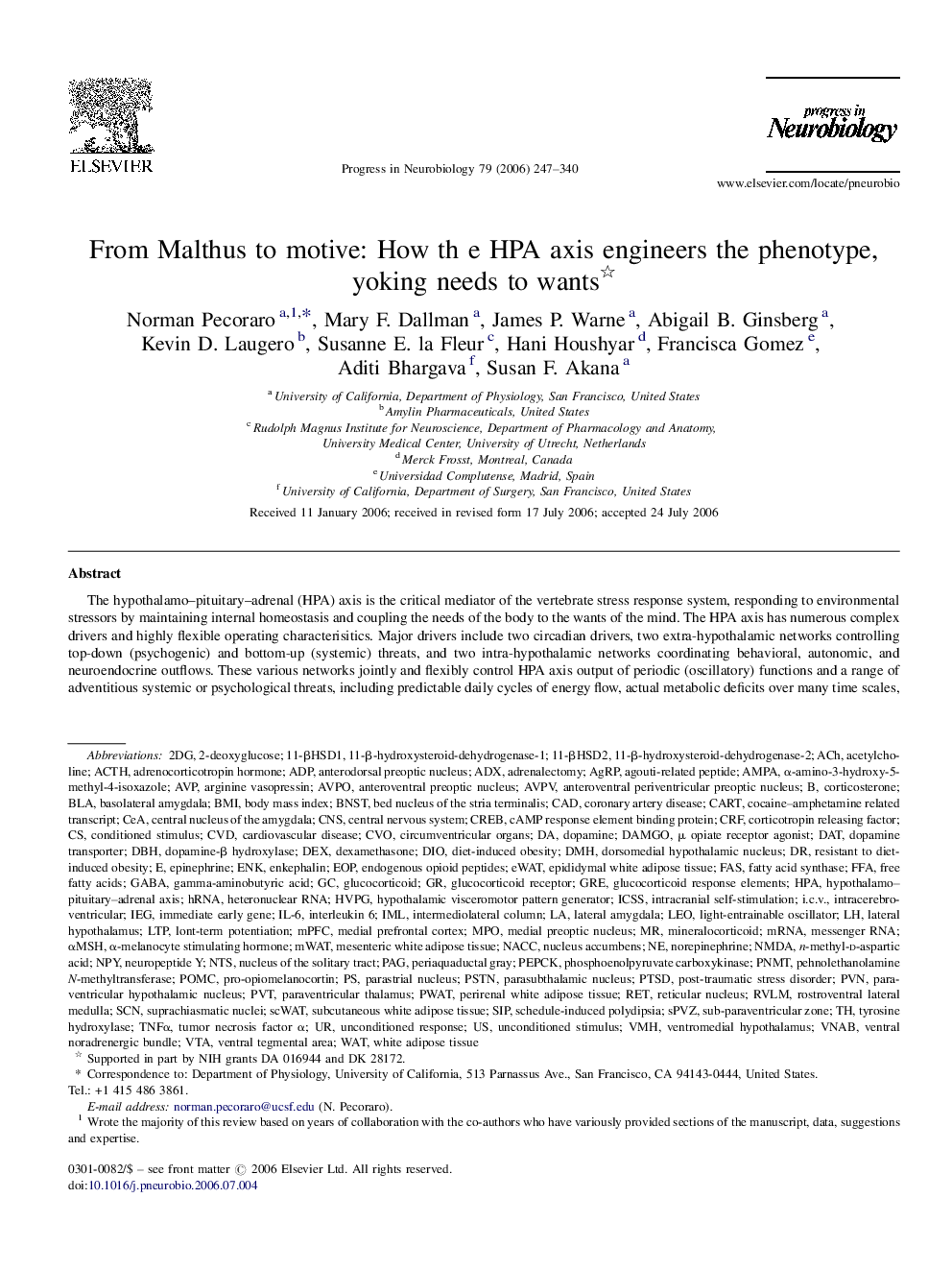| کد مقاله | کد نشریه | سال انتشار | مقاله انگلیسی | نسخه تمام متن |
|---|---|---|---|---|
| 4354033 | 1615411 | 2006 | 94 صفحه PDF | دانلود رایگان |

The hypothalamo–pituitary–adrenal (HPA) axis is the critical mediator of the vertebrate stress response system, responding to environmental stressors by maintaining internal homeostasis and coupling the needs of the body to the wants of the mind. The HPA axis has numerous complex drivers and highly flexible operating characterisitics. Major drivers include two circadian drivers, two extra-hypothalamic networks controlling top-down (psychogenic) and bottom-up (systemic) threats, and two intra-hypothalamic networks coordinating behavioral, autonomic, and neuroendocrine outflows. These various networks jointly and flexibly control HPA axis output of periodic (oscillatory) functions and a range of adventitious systemic or psychological threats, including predictable daily cycles of energy flow, actual metabolic deficits over many time scales, predicted metabolic deficits, and the state-dependent management of post-prandial responses to feeding. Evidence is provided that reparation of metabolic derangement by either food or glucocorticoids results in a metabolic signal that inhibits HPA activity. In short, the HPA axis is intimately involved in managing and remodeling peripheral energy fluxes, which appear to provide an unidentified metabolic inhibitory feedback signal to the HPA axis via glucocorticoids. In a complementary and perhaps a less appreciated role, adrenocortical hormones also act on brain to provide not only feedback, but feedforward control over the HPA axis itself and its various drivers, as well as coordinating behavioral and autonomic outflows, and mounting central incentive and memorial networks that are adaptive in both appetitive and aversive motivational modes. By centrally remodeling the phenotype, the HPA axis provides ballistic and predictive control over motor outflows relevant to the type of stressor. Evidence is examined concerning the global hypothesis that the HPA axis comprehensively induces integrative phenotypic plasticity, thus remodeling the body and its governor, the brain, to yoke the needs of the body to the wants of the mind. Adverse side effects of this yoking under conditions of glucocorticoid excess are discussed.
Journal: Progress in Neurobiology - Volume 79, Issues 5–6, August 2006, Pages 247–340